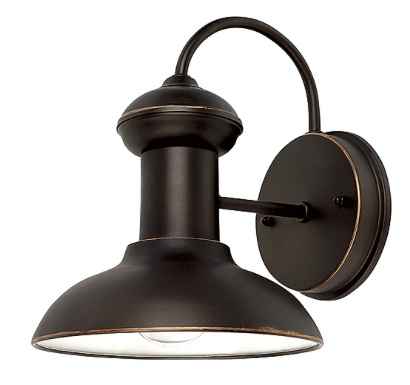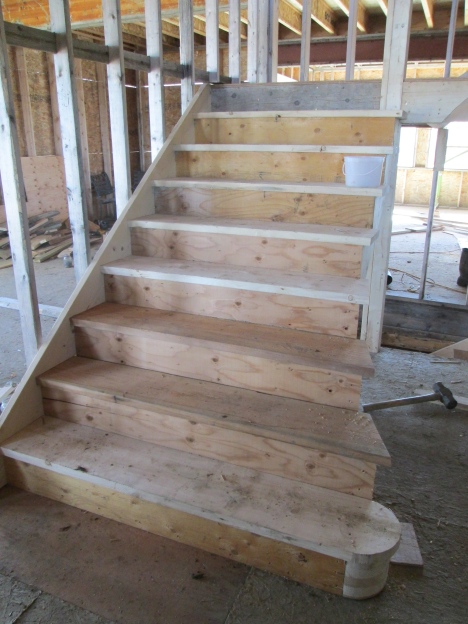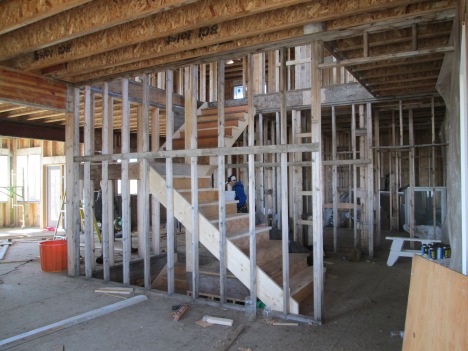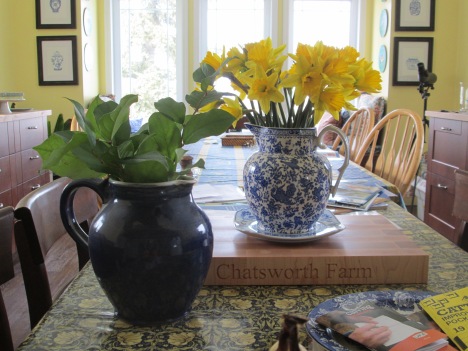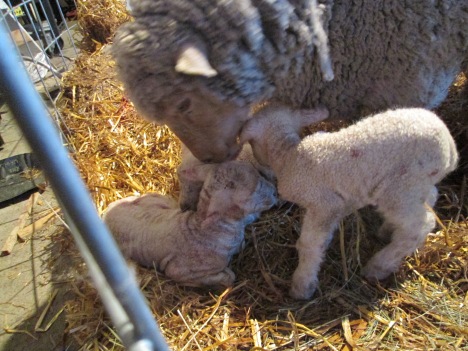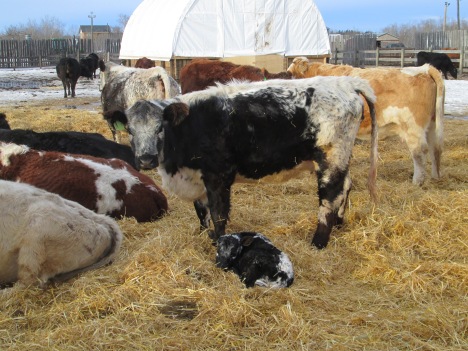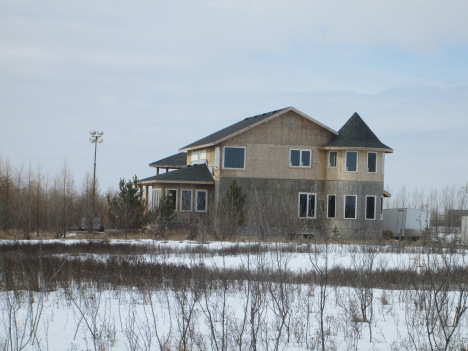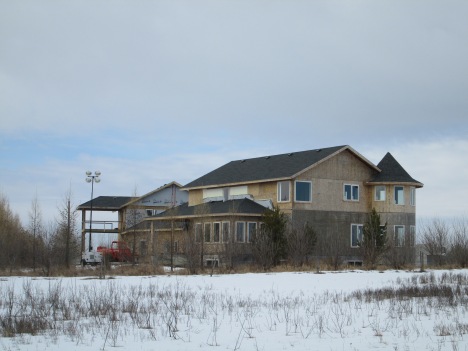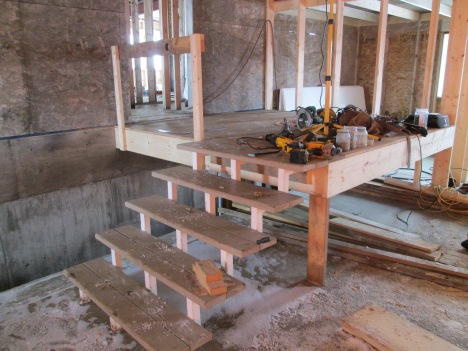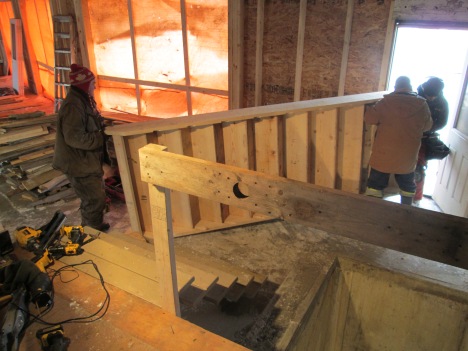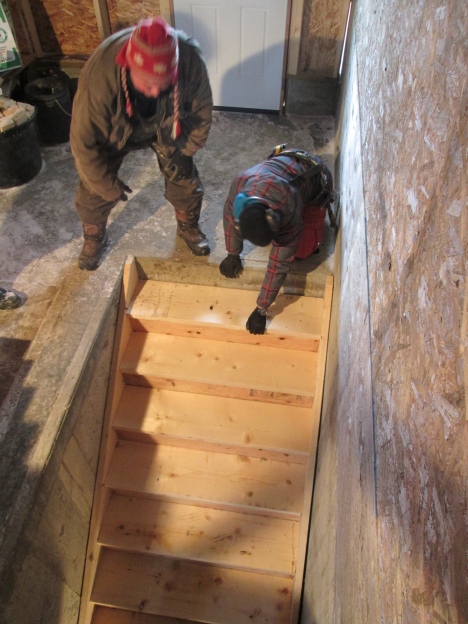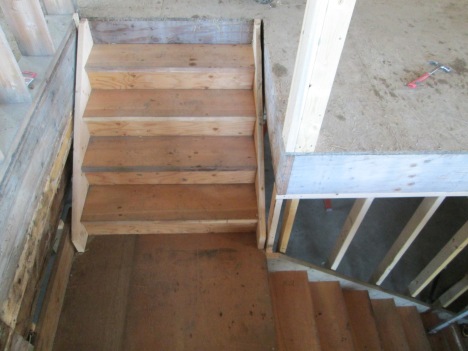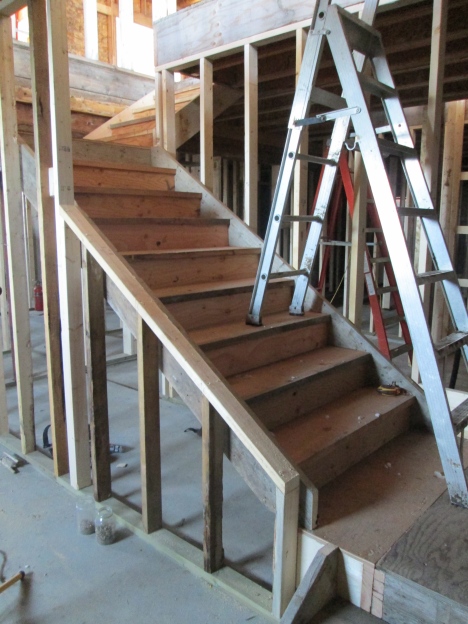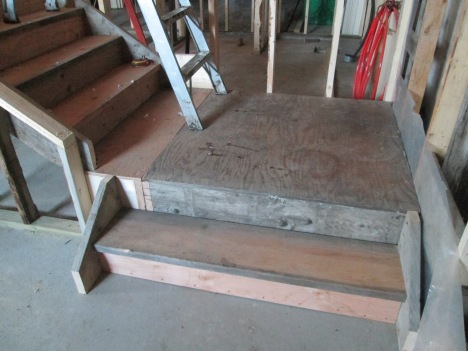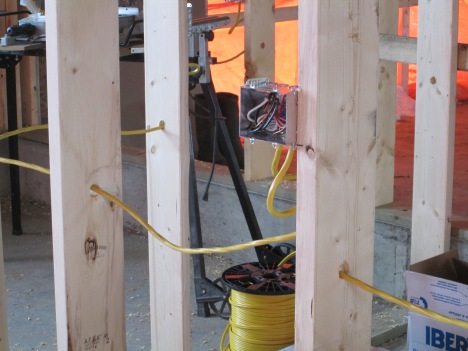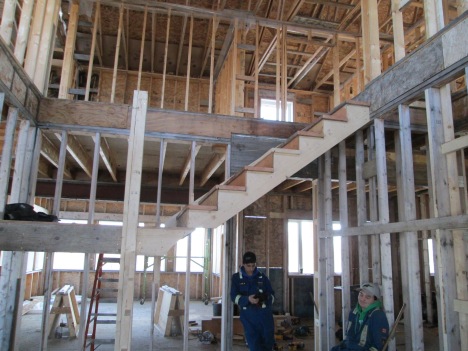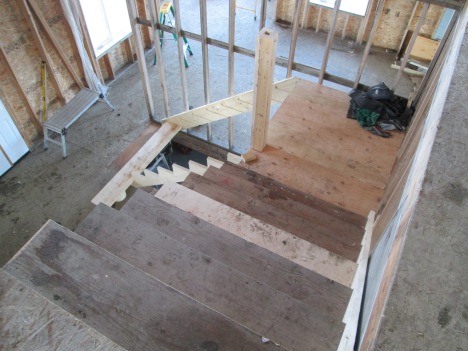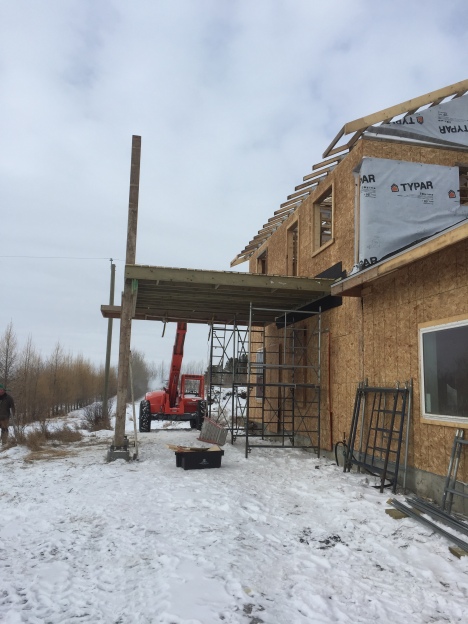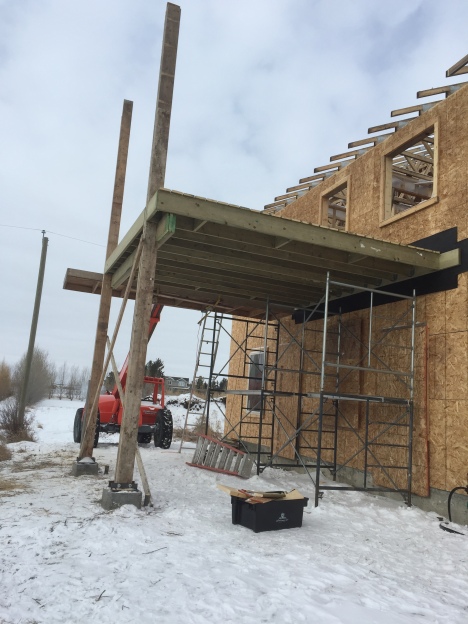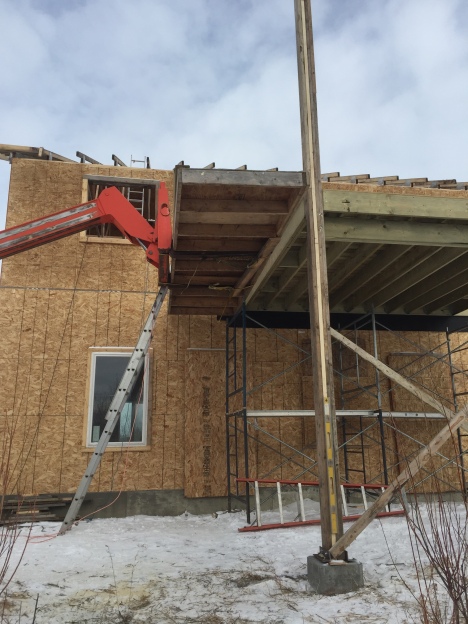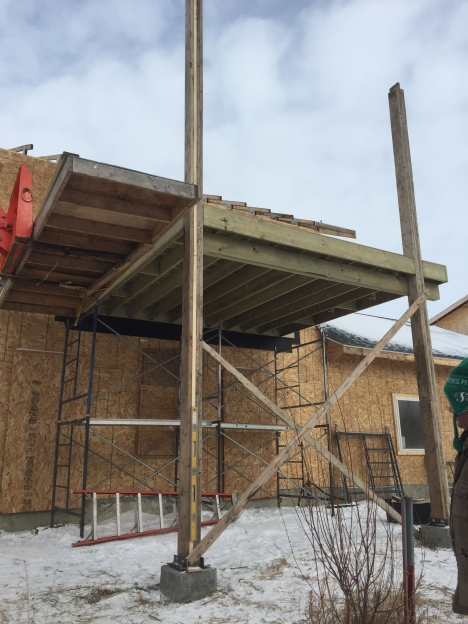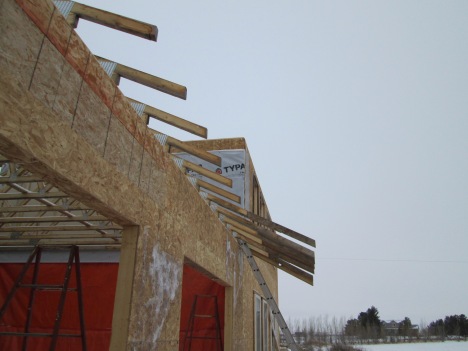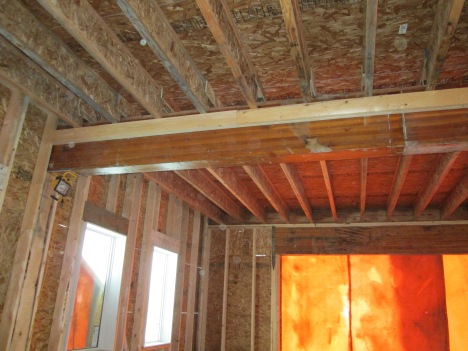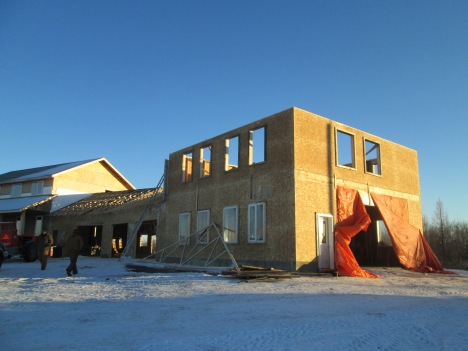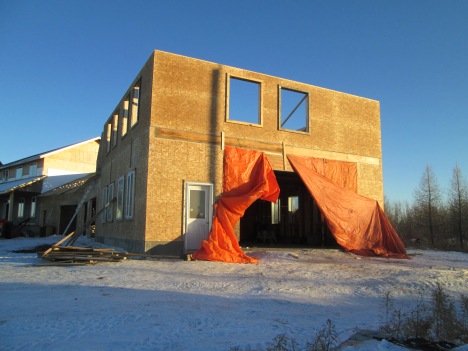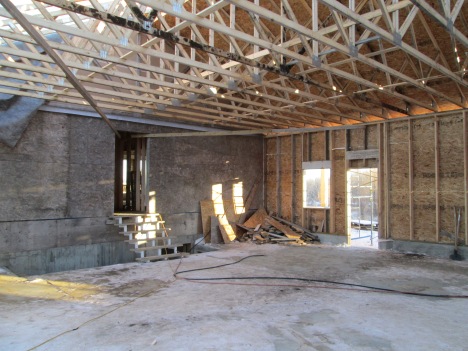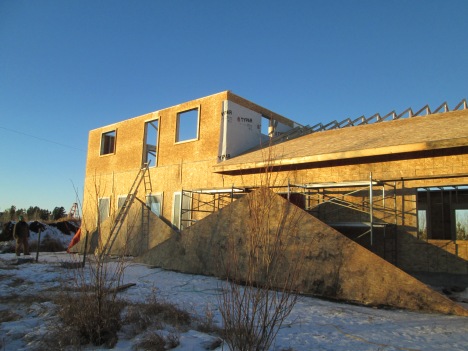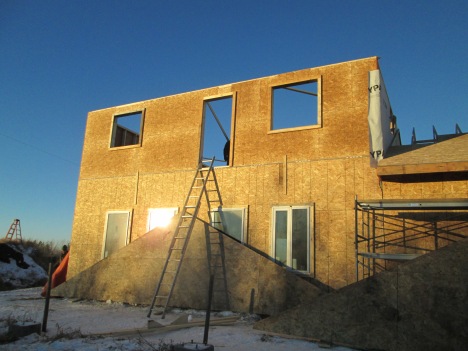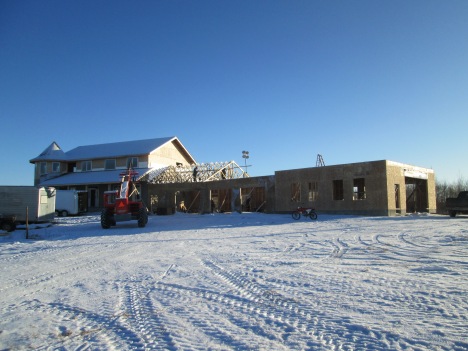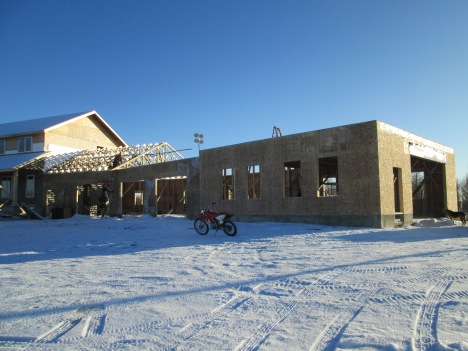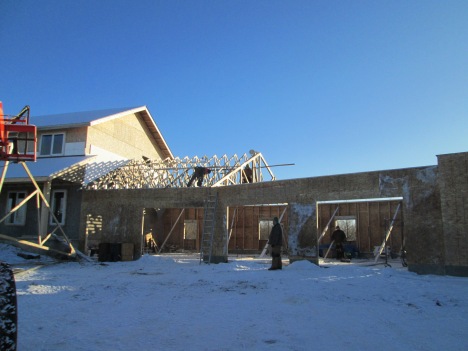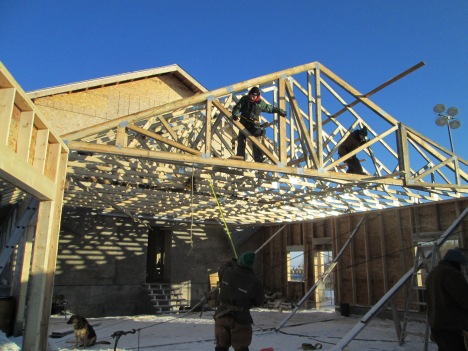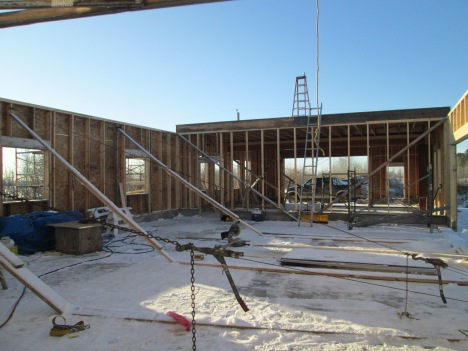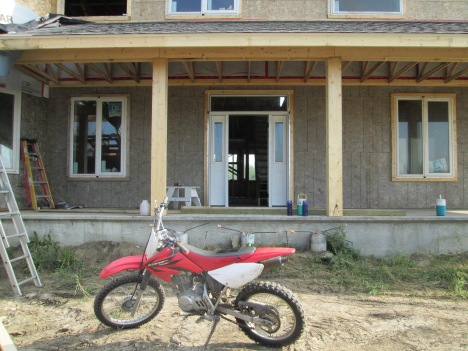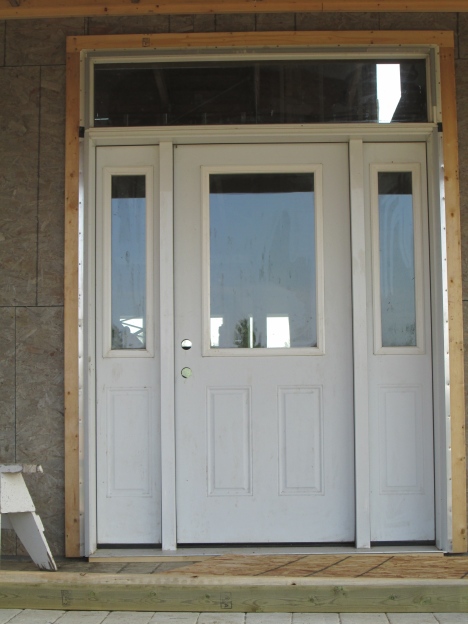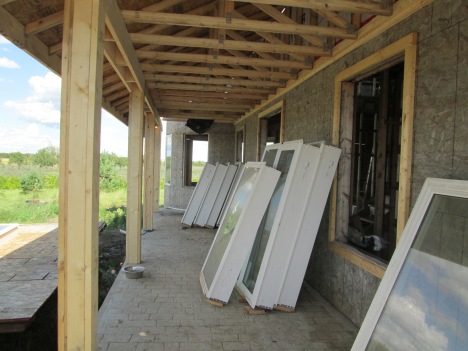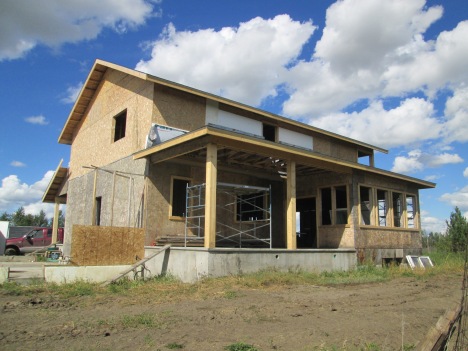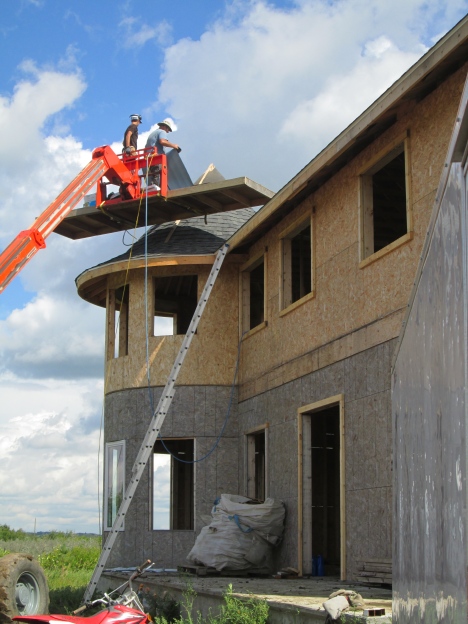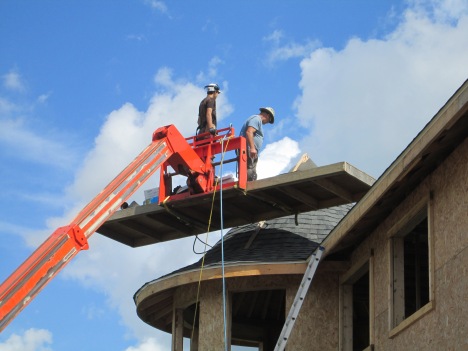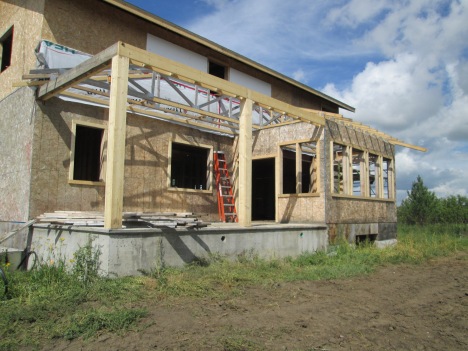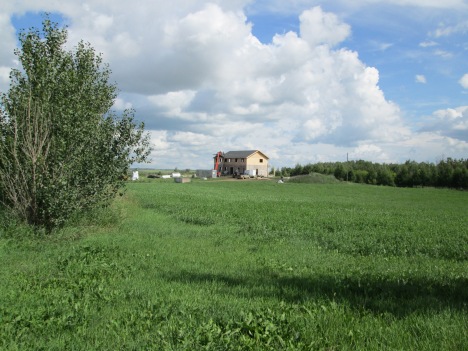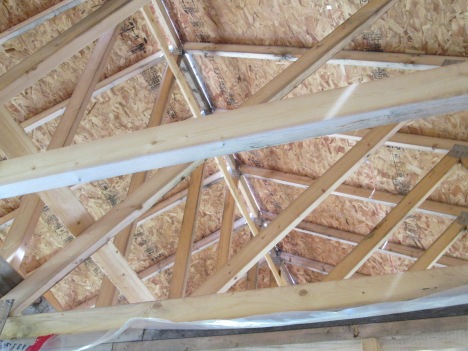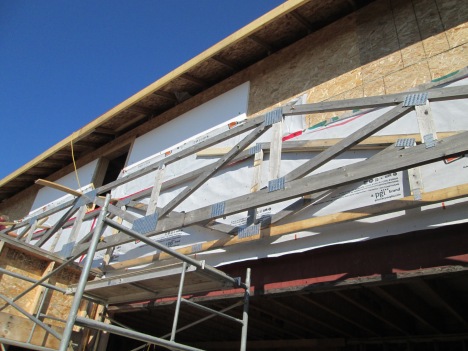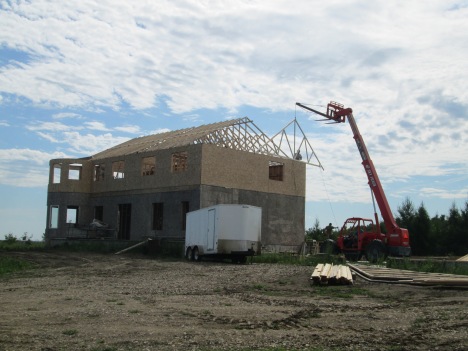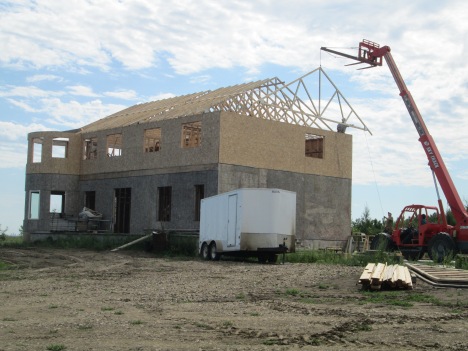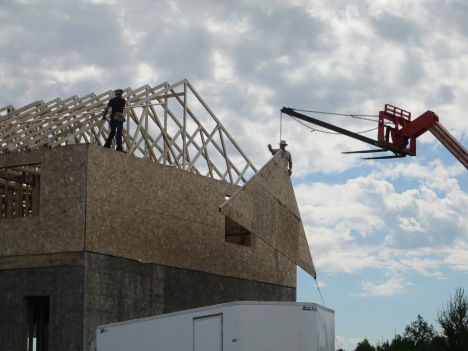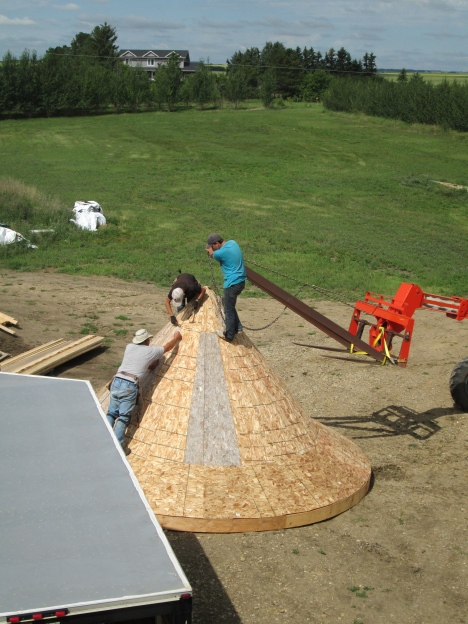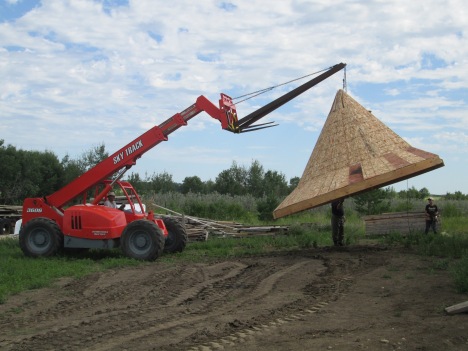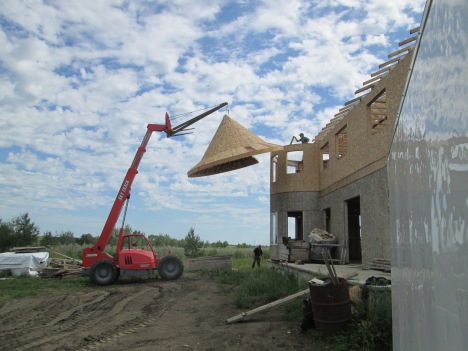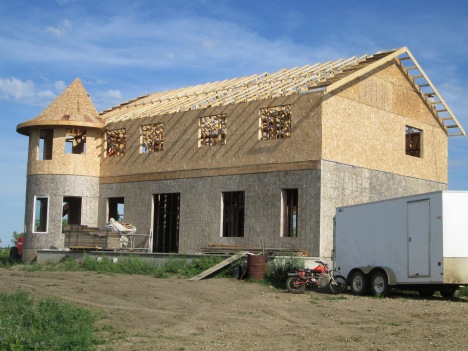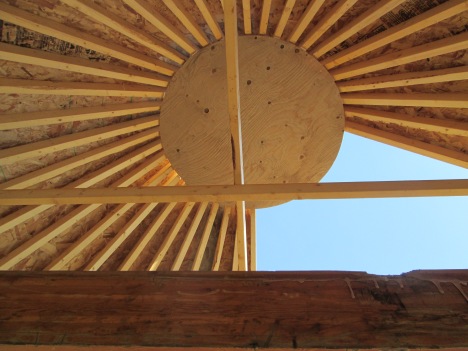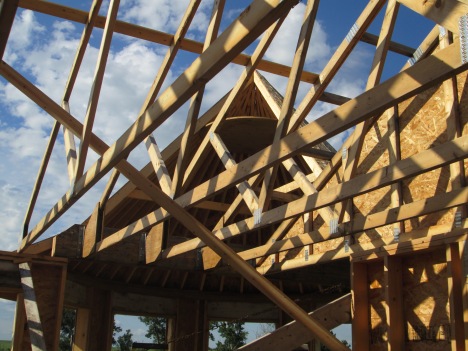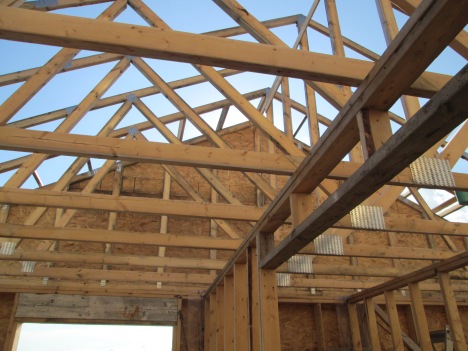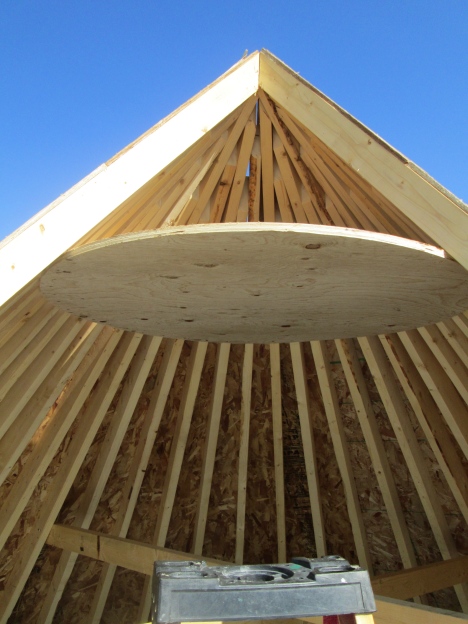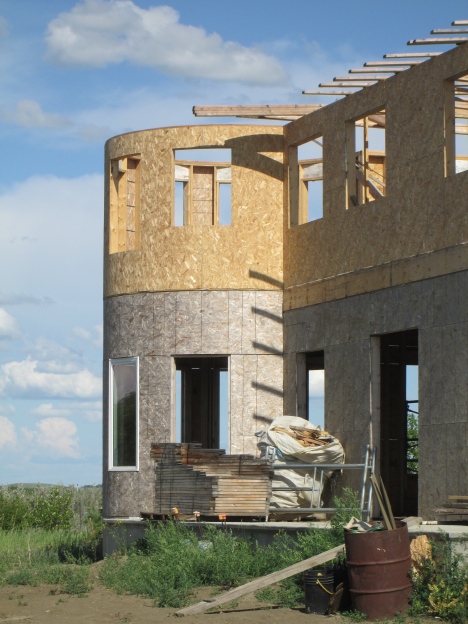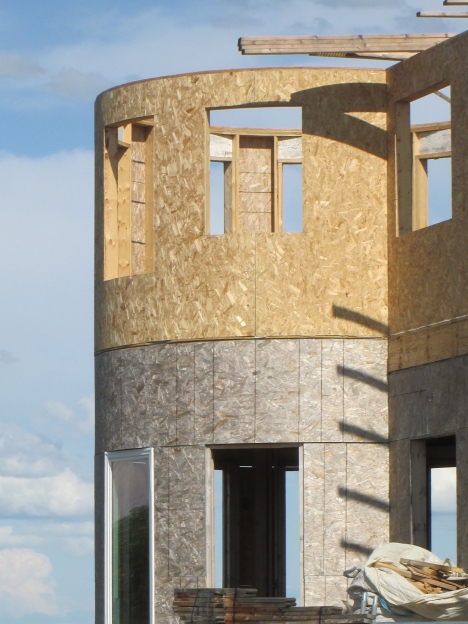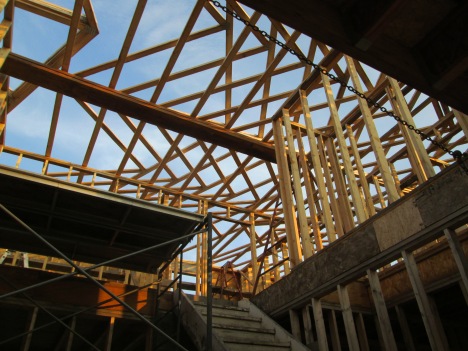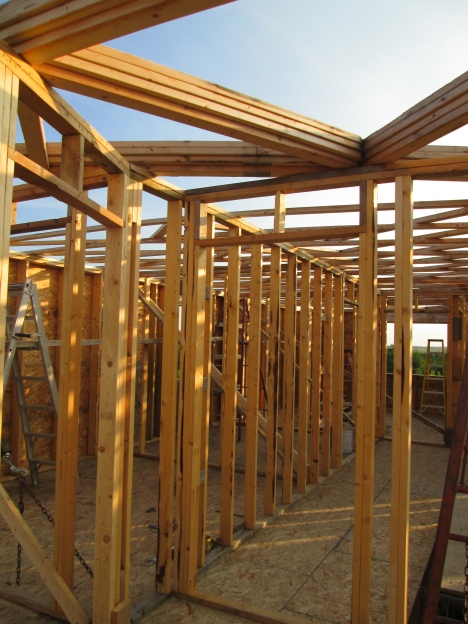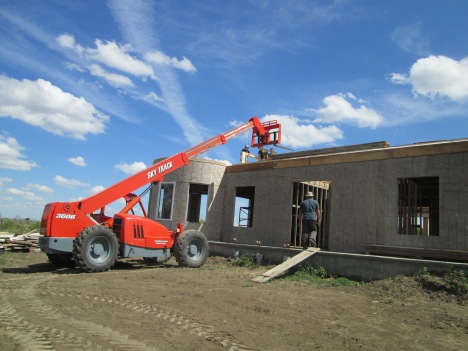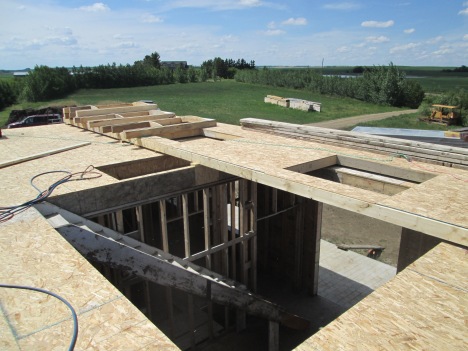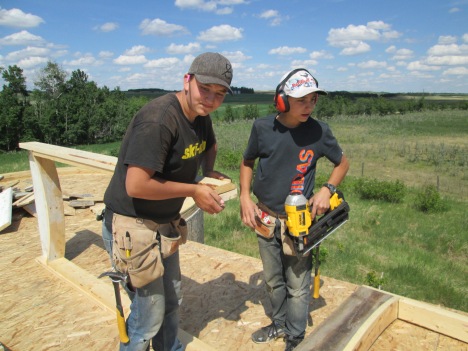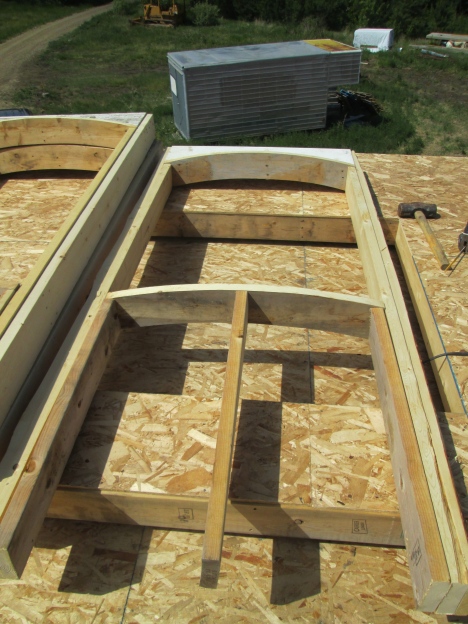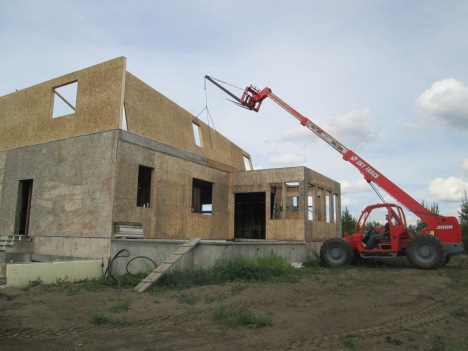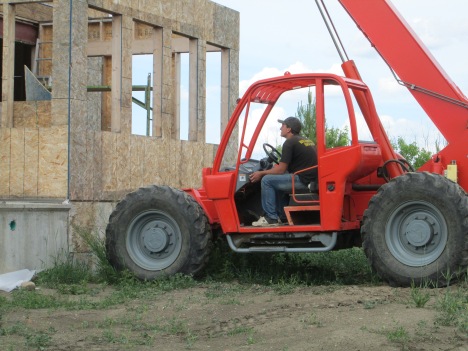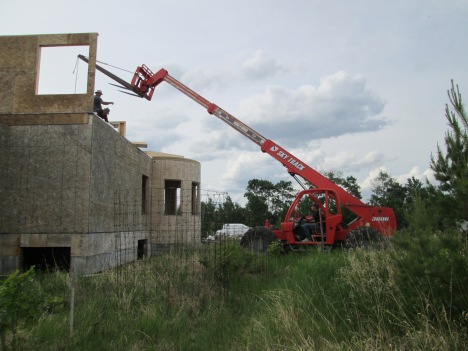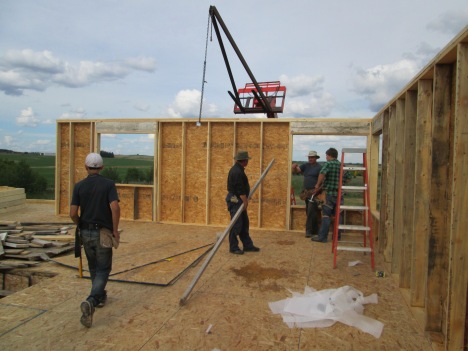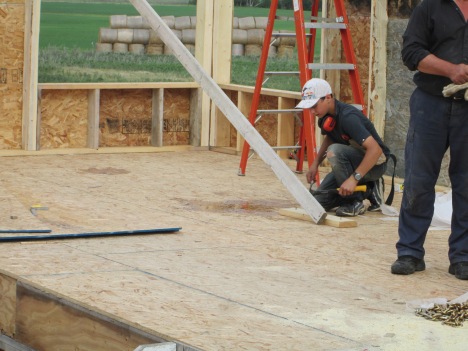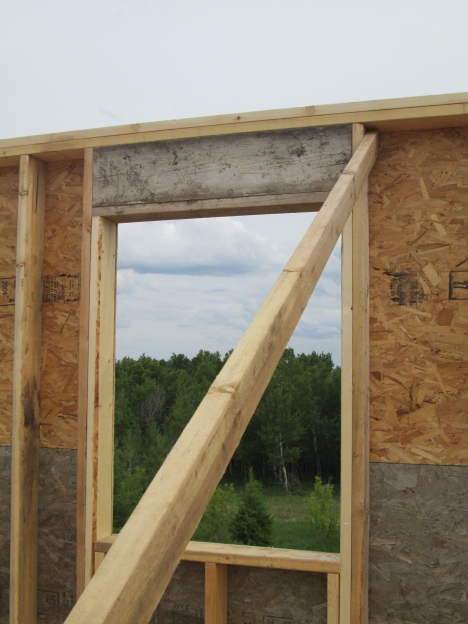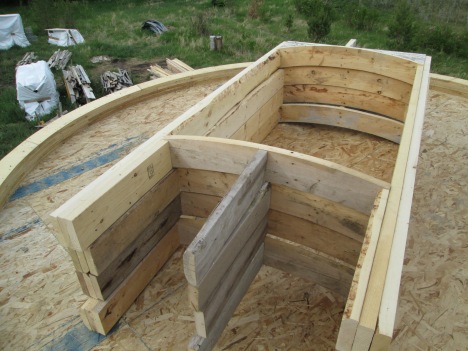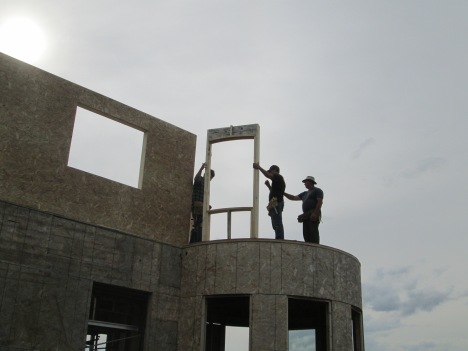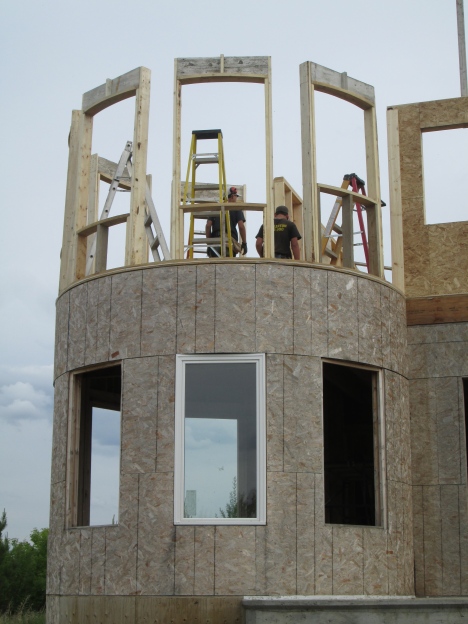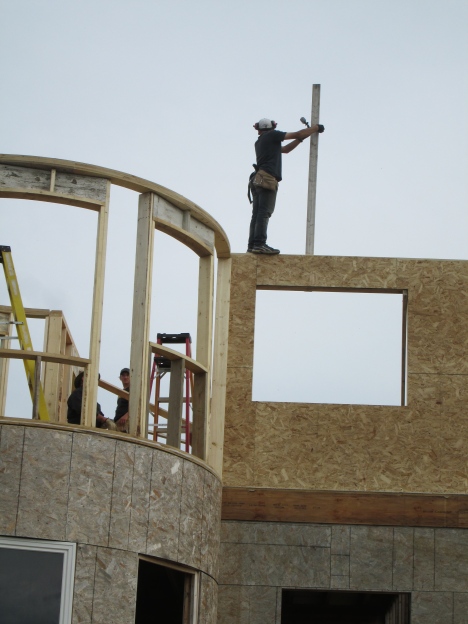As parents, we make choices for our kids when they are very young with — we hope, we believe — their best interests at heart. I made a decision for Laura shortly after her birth that she recently came to realize was not the right choice for her, and we’ve spent a good deal of time and money, along with a recent “field trip” to the nearest U.S. consulate to renounce U.S citizenship, so that Laura could correct that situation and bring her citizenship in line with her reality.
Laura, who is 18-1/2 and just graduated from high school, was born in Canada and is a Canadian by birth. She has never lived in the U.S. and never had a U.S. passport. But she was also — by accident of birth to a (then) U.S. citizen, who then (sigh) applied for a consular Report of a Birth Abroad — a dual citizen. Laura realized over the past year, after much study (her “curriculum” selections and recommended reading list are below) and reflection, that she is not a dual citizen but a Canadian, and a Canadian only, who has only ever lived in Canada, and who does not believe in divided national loyalties. And she wanted to begin adult life with as few impediments as possible. She had read that renouncing is easiest between the ages of 18 and 18-1/2, because the paperwork requirements are much simpler, so she started the process last year around the time of her birthday, and after submitting all of the required paperwork last November, was given an appointment for last week; that’s a wait of more than six months for the appointment and some locations, like Toronto, have even longer waits. At last week’s appointment, she was told the wait time to receive her official Certificate of Loss of Nationality, which will be dated with last week’s appointment date, will be four to six months. For 2013, there was a 221 percent increase, a record number, of dual American citizens renouncing or relinquishing their American citizenship. In 2015, there were approximately 4,300 expatriations.
The past several years have been basically an Advanced Placement course on U.S. government, politics and law, and citizenship, covering early American history (“no taxation without representation” is apparently a variable concept depending on time and place), constitutional law, patriotism, homeland vs. Homeland, just vs. unjust laws, citizenship-based taxation (U.S. and Eritrea) vs. residence-based taxation (the rest of the world), national sovereignty, personal vs. national privacy and security considerations, and what — or what should — determine citizenship (for example, jus sanguinis, “the right of blood”, or the acquisition of citizenship through parentage; or jus soli, “the right of soil”, or citizenship by virtue of being born in a particular territory. There were also discussions about being Canadian and living in Canada, but having U.S. officials consider everything about you, from your Canadian passport to your Canadian address to your Canadian father, “foreign” or “alien”, when to a Canadian they all mean “home”. It was probably as good a way as any for Laura to figure out what, and where, home is.
This is a very complex issue. I’ll try to write about this as simply as I can, because
- there’s a lot of information involved, which can be overwhelming and the temptation to avoid it all can be great;
- there’s a lot of misinformation (accidentally as well as on purpose) which, if you follow it, can make make your/your family’s situation worse rather than better, including those who would equate Americans abroad with tax cheats who need to brought into “compliance“;
- that misinformation and misunderstanding of the situation confuses many Americans living in the U.S. — including extended family and friends — who don’t understand that there might be very real disadvantages to living overseas with U.S. citizenship; who think Americans abroad concerned about this issue are a bunch of whining complainers and/or tax cheats who don’t want to pay our fair share.
Here’s some background about the situation in general, from the very, very good Isaac Brock Society blog (named for the British major general in the War of 1812 who was responsible for defending Upper Canada against the United States):
The United States is one of two countries in the world that taxes its people no matter where in the world they may reside. The other is Eritrea, which the USA has condemened for terrorism and for its diaspora tax. The majority of US persons who live abroad are not aware of their filing requirements. But recently, the US government has decided to crack down on those who are not in compliance.
But what is more, the US government has begun, since about 2004, to apply with great pressure a long-neglected requirement of 35-year old law called the Bank Secrecy Act. That requirement is FBAR, the foreign bank account report, which the United States government expects annually from those who have accounts outside of the United States which exceed $10,000 in aggregate. The fines for failure to file this form are extortionate, and virtually no US person who lives abroad even knew about FBAR, while most of them, over a certain age, own bank accounts with retirement savings exceeding that amount. The threats of fines and imprisonment has frightened many people who as a result have consulted expensive accountants and tax lawyers to get this mess sorted out, only to face high accounting or legal fees on top of potential fines and back taxes. In 2009 and 2011, the IRS offered voluntary disclosure programs (OVDI). Some who entered into the 2009 OVDI, because of fear of the penatlies, were shocked when the IRS assessed them fines in the tens of thousands, essentially treating them as tax evaders instead of a law abiding citizens in their countries of residence.
For many US expats, renunciation now seems like a really good idea. Why not? Many haven’t lived in the US for years and now they have few ties there except perhaps some family members. So they want to renounce their citizenship only to find that the laws regarding expatriation are confusing and that the exit tax requirements are at best complicated and invasive, and at worst, extortionate and utterly in violation of their right to expatriate.
The media coverage of this issue has been uneven. There have a been a few balanced stories, but most of the time, the media has merely publicized the purposes of the US government; this is especially true of US media sources. The Canadian media has generally done a much better job of grabbing the attention of the world about the abuses of the US government. That being said, even the Canadian media sometimes falls into the IRS trap of projecting fear in order to force compliance. Overall, we regret when the media offers only condemnation and fear without telling the story from the side of the victims or informing them of their rights and alternatives.
US persons abroad also face US border guards who are starting to put pressure on all those who have a US place of birth to travel only on a US passport, even if the person has not been a US person for decades–an arbitrary change of policy making those who relinquished citizenship into would-be loyal taxpayers to a profligate government that has to borrow 40 cents on every dollar its spends.
As with a number of bureaucratic decisions, there is a lot of noise about the intent to target “big fish” and tax cheats, and much of the recent legislation including FATCA seems intended as retribution for the decision by Facebook co-founder Eduardo Saverin but the reality is that it’s mostly little fish, with bank accounts and mortgages, and “foreign” spouses and children, who are getting caught in the net.
From Nancy L. Greene’s 2009 article, “Expatriation, Expatriates, and Expats: The American Transformation of a Concept”,
Expatriation was initially a form of nation-building. For the United States to justify its break from Britain, it had, among other things, to legitimate the notion of leaving one’s country of birth. Expatriation was thus seen as a form of inclusion in America, with former British subjects in mind. Like citizenship itself, expatriation was both a theoretical/rhetorical and a practical/legal issue for the early state. The Declaration of Independence, which complained that King George III had impeded the peopling of the colonies (“He has endeavoured to prevent the population of these States; for that purpose obstructing the Laws for Naturalization of Foreigners; refusing to pass others to encourage their migrations hither”), was a declaration of the right of emigration. In the ensuing decades, in order to consolidate American independence and citizenship, expatriation from Britain had to be deemed a legal, indeed natural, right for both the state and the individual. The United States had to counter both politically and philosophically the competing British claim that birth- right or perpetual allegiance bound those born under the crown everlastingly to it. This essentially feudal notion, most forcefully expounded by the famous jurist Sir Edward Coke in 1608, regarded expatriation as a moral travesty and a legal im- possibility. It would take several decades for the new nation to impose its view that expatriation was in turn a natural right. The right of exit was the necessary corollary to a right of entry, and a Lockean notion of free will underwrote the definition of the new American citizen. …
The United States may have been founded on a notion of the right to leave, leading Albert O. Hirschman [the German-born economist and author of Exit, Voice, and Loyalty] to speak of a “national love affair with exit,” but attitudes about leave-takers depend on who is doing the exiting, from where, to where, and when.
* * * * * * * * *
A recommended reading list for dual citizens of all ages:
“The Negative Implications of U.S. Citizenship on Those Starting Out in Life”
“My Thoughts on U.S. Citizenship for Young People”
“Letter of a Canadian Businessman to his Dual U.S./Canada Citizen Son on the Occasion of his High School Graduation” (and all comments at the Isaac Brock Society blog are always well worth reading)
Isaac Brock Society blog, and particularly helpful posts from the Isaac Brock Society blog (don’t miss the conversations going on in the comments, which are always helpful):
“Introduction to FATCA for Canadians”
“How to Renounce/Relinquish” (FYI children born dual must renounce, not relinquish)
IBS’s consulate report directory and CLN delivery time chart (aka “What to Expect, at the Consulate, When You’re Expatriating”); “currently 240 pages of first-hand accounts of renunciation/relinquishment appointments, arranged by consulate location, along with further information and links to the required Dept of State forms and the Dept of State manuals used by the consulates in processing CLN applications, with an appendix containing a chart of CLN delivery time as reported by consulate location.”
John Richardson’s Citizenship Solutions blog; Mr. Richardson, an American, is a Toronto lawyer who gives frequent, very good information sessions entitled “Information sessions: Solving the problems of U.S. citizenship”. And John himself is incredibly knowledgeable and helpful. He also writes for the Isaac Brock Society blog.
A new blog, The Dualist, an early 20-something born in the U.S. who left there at the age of 13 to live permanently in the UK, now dealing with
the options facing me – a UK citizen living, working and paying taxes in the United Kingdom – when I had just discovered that I am subject to US tax rules which say that no matter where I live, I should be annually filing federal income tax returns to the USA’s Internal Revenue Service (IRS), and reporting detailed information about all of my UK bank accounts to the Financial Crimes Enforcement Network. These rules apply to me because I am an American as well as a British citizen. The US government considers me to be a US taxpayer not unlike an American living within the States, even if I haven’t lived in the US since I was a child, rarely visit, make no income in the US and have no assets there. The fact that I hadn’t been filing meant I was considered as a delinquent non-filer under US tax policy.
In outlining the different options I had for addressing this newly-discovered ‘delinquent non-filer’ status, I showed that even though I was a young person from a normal background just starting out in adult life, there were no easy solutions or certain outcomes. Briefly, the main options were to stay outside the system, enter the system and try to live compliantly, or enter the system with the intention of renouncing my US citizenship in the future.
American international tax lawyer Phil Hodgen’s blog posts about expatriation, including a recent 10-part series by an Irish-American 17-year-old who renounced as a minor, aka “The Expatriation Chronicles of an Accidental American”
San Francisco tax lawyer Robert Wood’s articles at Forbes, such as this one, this one, and this one
The difference between renouncing and relinquishing explained, at IBS and at Citizenship Solutions blog; children born dual can only renounce, not relinquish
One needs to be be very, very careful about the “help” one seeks with this issue because there are many predatory and ignorant accountants and lawyers whose help will net you only large bills and more rather than fewer headaches. There are good, knowledgeable, helpful people and resources available, often free or inexpensive, and this list includes a number of them. Read widely and ask questions before you make any decisions.
And, on the lighter side:
Michael Moore’s latest documentary, Where to Invade Next (2015)
Canadian Bacon, Michael Moore’s fictional precursor to his latest, starring the late, great, Canadian John Candy
Rick Mercer’s Talking to Americans, available on YouTube
* The fee for renouncing or for relinquishing is currently US $2,350, payable in cash or by credit card (which must be in the renunciant’s name). In September 2014, the U.S. State Department hiked the renunciation fee by 422 percent, from U.S. $450 to U.S. $2,350. The fee to relinquish in recent years went from 0 to $450 to, last year, $2,350. The current fee is more than 20 times the average of other high-income countries, and the U.S. government has collected about U.S. $12.6 million in fees since the Autumn 2014 fee hike.
Filed under: American history, Canadian history, Canadiana, Civics, Current Events, Education, Family, History, Home Education, Knowledge & Wisdom, Onward & Upward, Raising Children, World history | 1 Comment »








